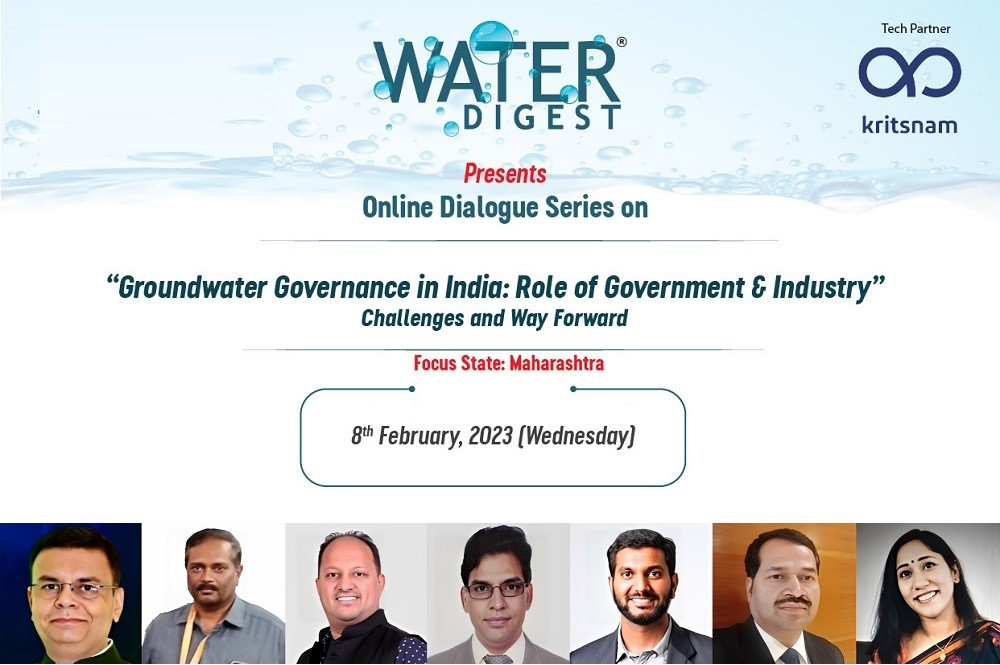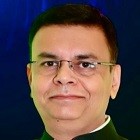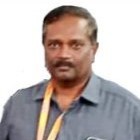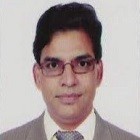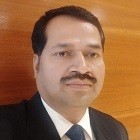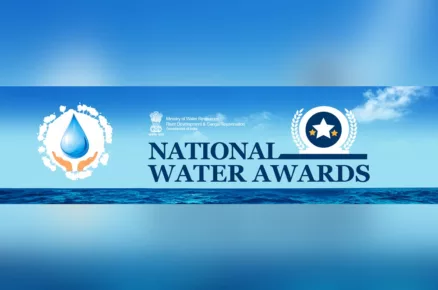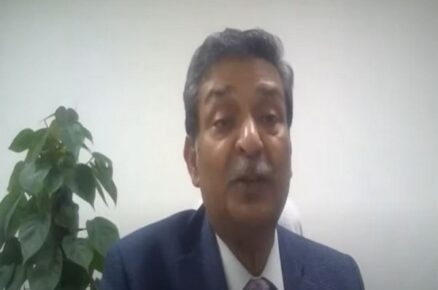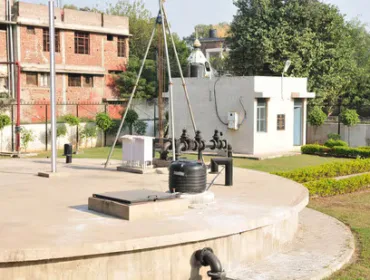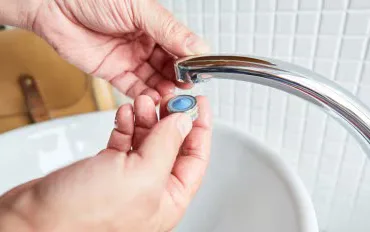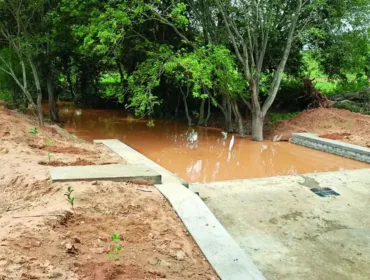WD News: Water Digest, in collaboration with Kritsnam Technologies Pvt. Ltd., organised the third edition of its online Water Dialogue series on February 8, 2023 to highlight and discuss the need for smart and sustainable groundwater management in industrial, commercial and agricultural sectors.
The focus state of this edition was Maharashtra.
-
The idea of this series is to make every person value the role of sustainable groundwater in our natural hydrological cycle because, groundwater is the soul of our Earth.
-
The series aims to cover significant areas like groundwater extraction regulations for industries, infrastructure and mining projects, challenges faced by groundwater users in taking NOC and fulfilling the criteria, adoption of new guidelines on groundwater, framing regulations applicable to specific states, need for conducting water audits and compliance, smart technologies for users & regulators for sustainable usage of groundwater, improving, monitoring and data evaluation, and what more to expect in future in terms of regulations.
Dr Vijay Pakhmode, Joint Director, Groundwater Surveys and Development Authority, Maharashtra, in his special address, spoke about three essential parameters for groundwater occurrence – rainfall, topography, and geology.
He said that the rainfall pattern is erratic in different regions of Maharashtra, which makes it difficult to predict it. Since the topography is uneven, the land does not get enough time to recharge the water table as it flows down to low-lying areas. On the other hand, most of the underground area is based on hard rock formation, which poses another challenge to absorb water.
Most of the groundwater in the state, he said, is available in the shallow aquifers that is up to 20 metres from the ground level. He shared that a new Groundwater Act is in the process of being drafted in the state, which will be more consistent with the National Green Tribunal (NGT) guidelines apart from other updates.
Shri N Varadaraj, Regional Director, Central Ground Water Board, Nagpur, Maharashtra gave the keynote address. He shared that the stage of groundwater extraction in the state is 54.68% as per groundwater resource estimate 2022. He further shared that for the estimate, 353 blocks were assessed, 11 units were categorised as ‘over-exploited’, 7 blocks were in ‘critical’ stage, 62 blocks were ‘semi-critical’ and remaining 272 units were ‘safe’ while 1 block was in the ‘saline’ category.
He went on to explain the plans of installing 13,000 Doppler Weather Radars (DWR) in the country, out of which 1,269 real-time DWRs would be installed in five years in Maharashtra.
He stressed upon creating awareness among the farmers and giving them incentives so that they can make their water budgets, adopt techniques like drip irrigation, and contribute in bringing more area under planned and sustainable irrigation.
This was followed by a Technical Session on Groundwater Governance in India: Role of Government & Industry (Focus State: Maharashtra).
Shri Satish Shetty, President, Taloja Industries Association, presented the industry perspective. He raised the concern of industries based in Taloja industrial area, which falls under Maharashtra Industrial Development Corporation (MIDC). The industries there are not allowed to use borewells, not even for cleaning, sanitation, tree plantation and basic requirements.
He further shared that in Taloja, MIDC is supplying 32 MLD of water every day and the capacity of Taloja Common Effluent Treatment Plant (CETP) is 27.5 MLD while the existing CETP has a load of 16.5 MLD.
Dr YB Sontakke, Director, Water, Maharashtra Pollution Control Board (MPCB) said the industries in Maharashtra are spread across the state, and many of them are not located in the MIDC area. These industries, he said, are primarily facing the problem of water shortage. He talked about groundwater depletion being the biggest concern. We cannot remain dependent on surface water as we are aware that all the rivers in Maharashtra are non-perennial, i.e. they are not flowing all through the year, he said.
He also shared that the agriculture segment is using around 80 percent of water while industries are using 6 to 7 percent of total water, including all type of industries and 1 percent is being used by the domestic segment. He emphasised on bringing attention back on minimising the water being used for irrigation and how to recharge water for this purpose.
He also talked about surface water loss through evaporation, etc. and the need to take water conservation measures for it. He also laid emphasis on various regulations to manage and control the use of water.
Shri Vinay Chataraju, Co-Founder, Kritsnam Technologies began his address with the need of technology intervention in groundwater management and gave examples to elaborate his point. He then went on to present his thoughts alongwith an analytical review of the current scenario and future roadmap on the theme of groundwater governance.
He focussed on the issue of groundwater depletion in detail. Supporting his views, he said that as per a FICCI report, 83% industries have reported major risk of inadequate availability of water whereas 62% Indian businesses depend on groundwater source. He highlighted that India needs data-driven water management. Going ahead, he shared the important steps to be taken in this direction. The first step, he said, is to know your water footprint from all sources, the second is internal water budgeting and the third is benchmarking with peers (water intensity ratio).
He proceeded to explain the features and benefits and groundwater data collection instruments like Piezometer/DWLR (used to monitor depth of water level from the ground surface) and Digital Flow Meters (used to monitor quantum of water abstracted). He explained the importance of the need of a data driven groundwater policy. He gave a detailed overview of Dhaara Smart Ultrasonic Flow Meters and shared its mobile and web applications for easy data access, which can be used for industrial metering and industrial water monitoring.
Shri SK Chaurasia, Chief Executive, Aditi Infotech focused on various suggestions which, if implemented, could help the industries while applying for the NOC, and eventually result in more NOCs getting issued by the authority. He talked about the need for a more ‘user-friendly’ CGWA web portal required by every proponent and consultant, which is not the case right now.
He highlighted issues like CGWA online portal crash during the filing of NOC application/ renewal/ compliance process. He also said that the online groundwater charges vary from the calculated value by CGWB/CGWA. He pointed out that the second-year self-compliance tab is missing (which must be submitted every year through the web portal, as per NOC).
The telemetry digital water flowmeter specification is available while for digital water level recorder, they are not available on CGWA portal. Also, the exempted NOCs do not contain telemetry term for digital flowmeter due to which many proponents are using mechanical meter till date.
Ms Anupama Madhok Sud, Director & Editor, Water Digest, moderated the event. In her address, she said that urbanisation is putting a lot of pressure on our water resources, and groundwater, as a precious resource, needs a lot of attention from all of us. She elaborated the point by sharing the trend of declining per capita water availability which was 5177 m3 in 1950 that reduced to 1545 m3 in 2011 and is much lower today.
Quoting the current scenario in Maharashtra from the report, National Compilation on Dynamic Ground Water Resources of India 2022, she said that as compared to the 2020 assessment, the annual groundwater recharge in 2022 has increased from 32.01 to 32.28 BCM. This marginal increase in recharge is due to the state government’s intervention in water conservation activities, she said.
The participants shared their queries in a Question & Answer (Q&A) Session after the technical session which were answered by the panellists.
The queries ranged from methods of rainwater harvesting measures and the need for incentives to make it more widespread; the need for making data accessible to individual farmers about the water available for micro watershed or mini watershed; formalities for the extraction being done by the construction sector and rate of recharge which facilitates the optimum groundwater level; the availability of data on number of existing borewells as well fresh requests for borewells by the industrial and agricultural sector; etc.
The panel of speakers responded to all the queries and shared their expert views on the subject.
Click here to watch the complete session.




